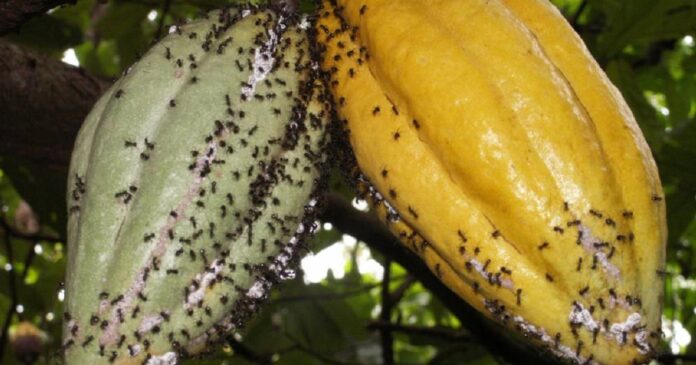We use various strategies in managing cocoa pests and diseases. These include the use of improved varieties, cultural, biological and chemical controls methods.
However, chemicals have a severe consequence on the environment and may also be harmful to consumers of the crops.
The effect of trying to control cocoa pests and diseases
The Integrated Pest Management (IPM) concept was developed to minimize the effects of chemicals used in pest and disease control. Now called, Integrated Crop Management (ICM). The concept, in addition to pest and disease control, helps to manipulate several environmental factors to obtain a healthy crop. So, by using IPM or ICM, you can get enhanced crops in health and yield.
The perfect solution in IPM or ICM
Principles and Practice of IPM or ICM
The general principles and practices involve the following:
- Obtain and plant improved healthy planting materials
- Select fertile soils and suitable planting sites
- Adopt good nursery practices
- Adopt appropriate planting distances and planting patterns
- Plant crops at appropriate times
- Adopt good soil management practices
- Adopt suitable water management practices
- Carry out regular weed management
- Visit field regularly
- Maintain a high level of sanitation
- Manage pests and disease efficiently
- Enhance the build-up of populations of natural enemies or beneficial
- Minimise the application of chemical pesticides
- Adopt good harvesting techniques
- Adopt good, clean storage systems
Decision-making process of IPM or ICM
This process of decision making in the implementation of IPM or ICM involves the following steps:
Observe – so that you know what is happening to your crop
Learn – to understand the organism or problem affecting your crop and the nature of the damage caused
Decide – on the best action to take to reduce the crop damage caused by pest, disease or environmental factors
Act – upon the management method chosen in order to overcome the problem


